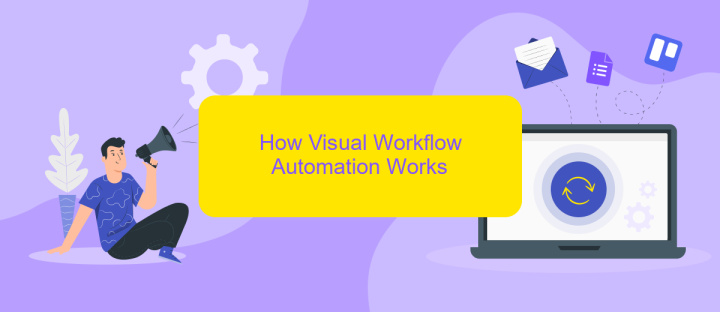Visual Workflow Automation
Visual Workflow Automation is revolutionizing the way businesses operate by simplifying complex processes through intuitive, drag-and-drop interfaces. This technology empowers users to design, execute, and monitor workflows without extensive coding knowledge, significantly enhancing efficiency and productivity. In this article, we will explore the key features, benefits, and real-world applications of visual workflow automation, demonstrating how it can transform organizational operations.
Introduction
Visual Workflow Automation is revolutionizing the way businesses streamline their processes. By utilizing intuitive, drag-and-drop interfaces, organizations can design and execute complex workflows without needing extensive coding knowledge. This approach not only saves time but also reduces errors and enhances productivity.
- Streamlined process management
- Reduced operational costs
- Enhanced accuracy and efficiency
- Improved scalability and flexibility
One of the key components of Visual Workflow Automation is the ability to integrate various applications and services seamlessly. Tools like ApiX-Drive facilitate this by allowing users to connect different systems effortlessly, ensuring smooth data flow and synchronization. As a result, businesses can focus more on innovation and less on manual, repetitive tasks, driving overall growth and success.
Benefits of Visual Workflow Automation

Visual workflow automation offers numerous benefits, significantly enhancing productivity and efficiency across various business processes. By allowing users to design workflows through an intuitive visual interface, it eliminates the need for complex coding, making it accessible to non-technical team members. This democratization of automation empowers employees at all levels to contribute to process optimization, leading to faster implementation and fewer errors. Additionally, visual workflow tools often include drag-and-drop features, which simplify the creation and modification of workflows, enabling organizations to adapt quickly to changing business needs.
Another significant advantage of visual workflow automation is its ability to seamlessly integrate with various applications and services. Tools like ApiX-Drive facilitate these integrations, allowing businesses to connect different systems without extensive programming knowledge. This connectivity ensures data flows smoothly between platforms, reducing manual data entry and minimizing the risk of errors. Consequently, businesses can achieve greater operational efficiency and accuracy. Furthermore, the visual representation of workflows provides clarity and transparency, making it easier to identify bottlenecks and optimize processes for better performance.
How Visual Workflow Automation Works

Visual Workflow Automation simplifies complex processes by allowing users to design workflows through a graphical interface. This approach eliminates the need for extensive coding knowledge, enabling users to automate tasks and processes with ease.
- Drag-and-Drop Interface: Users can create workflows by dragging and dropping elements, such as triggers, actions, and conditions, onto a canvas.
- Integration with Various Services: Tools like ApiX-Drive facilitate seamless integration with multiple applications, ensuring data flows smoothly between systems.
- Real-Time Monitoring: Users can monitor workflows in real-time, making it easier to identify and resolve issues promptly.
- Customizable Templates: Pre-built templates allow users to quickly set up common workflows, which can be customized to meet specific needs.
By leveraging visual workflow automation, organizations can streamline operations, reduce manual errors, and improve overall efficiency. The use of integration services like ApiX-Drive further enhances the capability to connect disparate systems, ensuring a cohesive and automated workflow environment.
Examples of Visual Workflow Automation

Visual workflow automation is revolutionizing the way businesses handle repetitive tasks, making processes more efficient and error-free. By using visual interfaces, even non-technical users can design and manage workflows without writing a single line of code. This democratization of automation empowers teams to focus on more strategic activities.
One of the most common applications of visual workflow automation is in integrating various software applications. Services like ApiX-Drive enable businesses to connect different systems seamlessly, ensuring data flows smoothly between them. By setting up automated workflows, companies can save time and reduce the risk of human error.
- Automating email marketing campaigns by integrating CRM and email platforms.
- Syncing data between e-commerce platforms and inventory management systems.
- Streamlining customer support by connecting helpdesk software with communication tools.
- Automating social media posting by linking content management systems with social networks.
These examples highlight how visual workflow automation can enhance operational efficiency across various departments. By leveraging tools like ApiX-Drive, businesses can create a cohesive and automated ecosystem, ultimately driving better performance and growth.
Conclusion
Visual Workflow Automation represents a significant advancement in streamlining business processes, enhancing efficiency, and reducing manual intervention. By leveraging intuitive visual interfaces, organizations can design, execute, and monitor workflows with ease, ensuring that tasks are completed accurately and on time. This approach not only minimizes human errors but also allows for greater flexibility and scalability in adapting to changing business needs.
Moreover, integrating tools like ApiX-Drive can further enhance the capabilities of visual workflow automation. ApiX-Drive simplifies the connection between various applications and services, enabling seamless data transfer and communication. This integration ensures that all systems work harmoniously, providing a cohesive and efficient workflow environment. As businesses continue to evolve, adopting visual workflow automation combined with robust integration tools will be crucial in maintaining a competitive edge and achieving operational excellence.
FAQ
What is Visual Workflow Automation?
How can Visual Workflow Automation benefit my business?
What types of tasks can be automated using Visual Workflow Automation?
Do I need technical skills to use Visual Workflow Automation tools?
How do I get started with Visual Workflow Automation?
Do you want to achieve your goals in business, career and life faster and better? Do it with ApiX-Drive – a tool that will remove a significant part of the routine from workflows and free up additional time to achieve your goals. Test the capabilities of Apix-Drive for free – see for yourself the effectiveness of the tool.

